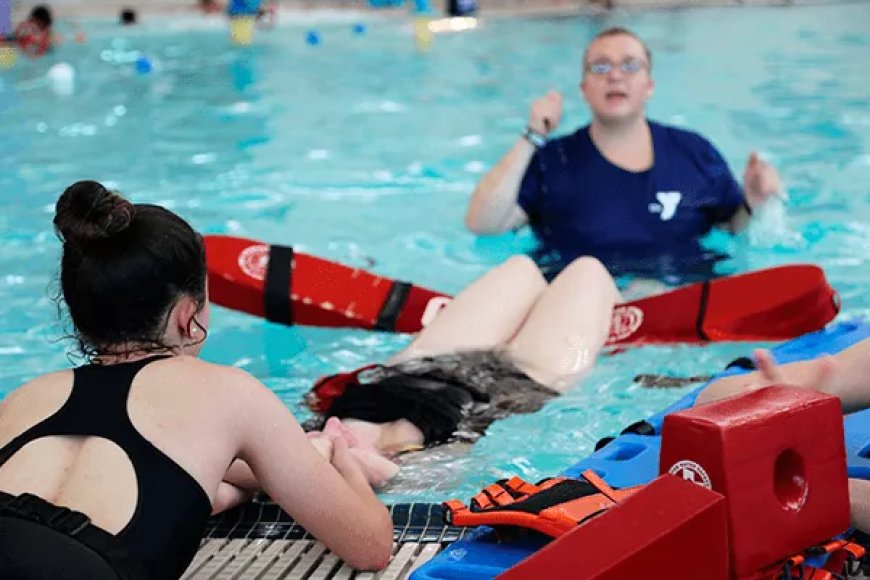Lifeguard Training: A Guide to Becoming an Expert
Lifeguard training,

Lifeguard training is a crucial step towards ensuring safety in aquatic environments such as pools, beaches, and waterparks. It equips individuals with the necessary skills and knowledge to prevent drowning incidents and respond effectively in emergencies.
Why Lifeguard Training is Essential
Importance of Lifeguards
Lifeguards play a vital role in maintaining public safety around water bodies. Their vigilant presence helps prevent accidents and provides immediate assistance in case of emergencies.
Reducing Drowning Incidents
Properly trained lifeguards significantly reduce the risk of drowning by actively monitoring swimmers, identifying potential hazards, and taking prompt action when needed.
Requirements for Lifeguard Training
Becoming a certified lifeguard requires meeting certain criteria:
Age Requirements
Most lifeguard training programs require candidates to be at least 15 or 16 years old, although some courses may have higher age requirements.
Swimming Proficiency
Candidates must demonstrate strong swimming skills, including the ability to swim a certain distance and perform specific strokes proficiently.
CPR and First Aid Certification
Lifeguards must be trained in cardiopulmonary resuscitation (CPR) and first aid to provide immediate medical assistance when necessary.
Types of Lifeguard Training Courses
Several organizations offer lifeguard training courses, each with its own curriculum and certification process:
American Lifeguard Association (ALA)
The ALA provides comprehensive lifeguard training programs recognized nationwide.
Lifeguarding
The American Lifeguard offers lifeguard training courses that cover water rescue techniques, CPR, and first aid.
specializes in aquatic safety and offers lifeguard training programs for various settings, including waterparks and resorts.
Components of Lifeguard Training
Lifeguard training typically consists of:
Classroom Instruction
Candidates learn about water safety, rescue procedures, and emergency response protocols through classroom lectures and discussions.
Practical Skills Assessment
Candidates practice rescue techniques, first aid procedures, and CPR under the supervision of certified instructors.
Physical Fitness Requirements
Lifeguard training includes physical conditioning to ensure candidates have the strength, endurance, and agility to perform their duties effectively.
Key Skills Taught in Lifeguard Training
Lifeguard training focuses on developing essential skills such as:
Surveillance and Scanning
Lifeguards learn to scan their designated areas regularly to identify swimmers in distress or potential hazards.
Rescue Techniques
Candidates are trained in various rescue techniques, including active and passive rescues, to safely remove individuals from the water.
First Aid Procedures
Lifeguards learn how to assess injuries, administer first aid, and stabilize patients until further medical assistance arrives.
Communication and Teamwork
Effective communication and teamwork are essential for coordinating rescue efforts and ensuring a swift response to emergencies.
Challenges Faced During Lifeguard Training
Lifeguard training can be physically and emotionally demanding, with challenges including:
Physical Demands
Candidates must undergo rigorous physical training to build strength, endurance, and stamina required for lifeguard duties.
Emotional Stress
Lifeguard training simulates real-life emergencies, exposing candidates to stressful situations that test their ability to remain calm and focused under pressure.
Handling Difficult Situations
Candidates learn how to handle challenging scenarios, such as dealing with distressed swimmers or enforcing safety rules, during lifeguard training.
Benefits of Lifeguard Certification
Becoming a certified lifeguard offers numerous benefits:
Employment Opportunities
Certified lifeguards can find employment at pools, beaches, waterparks, and other aquatic facilities.
Skill Development
Lifeguard training enhances candidates' swimming abilities, rescue skills, and medical knowledge, making them valuable assets in emergency situations.
Contribution to Community Safety
Certified lifeguards play a crucial role in ensuring the safety and well-being of individuals enjoying aquatic activities.
Tips for Success in Lifeguard Training
To succeed in lifeguard training, candidates should:
Stay Focused and Disciplined
Maintaining focus and discipline throughout the training program is essential for mastering the required skills and knowledge.
Practice Swimming and Fitness Regularly
Regular practice helps improve swimming proficiency and physical fitness, ensuring candidates meet the training requirements.
Review and Understand Course Materials
Candidates should thoroughly review course materials and actively participate in training sessions to grasp key concepts and techniques.
Common Misconceptions About Lifeguard Training
Despite its importance, lifeguard training is often misunderstood, with common misconceptions including:
Easy Job Perception
Many people underestimate the physical and mental demands of lifeguarding, assuming it is an easy job.
Limited Responsibilities
Contrary to popular belief, lifeguards have a wide range of responsibilities beyond monitoring swimmers, including enforcing safety rules and providing first aid.
What's Your Reaction?
 Like
0
Like
0
 Dislike
0
Dislike
0
 Love
0
Love
0
 Funny
0
Funny
0
 Angry
0
Angry
0
 Sad
0
Sad
0
 Wow
0
Wow
0
























































